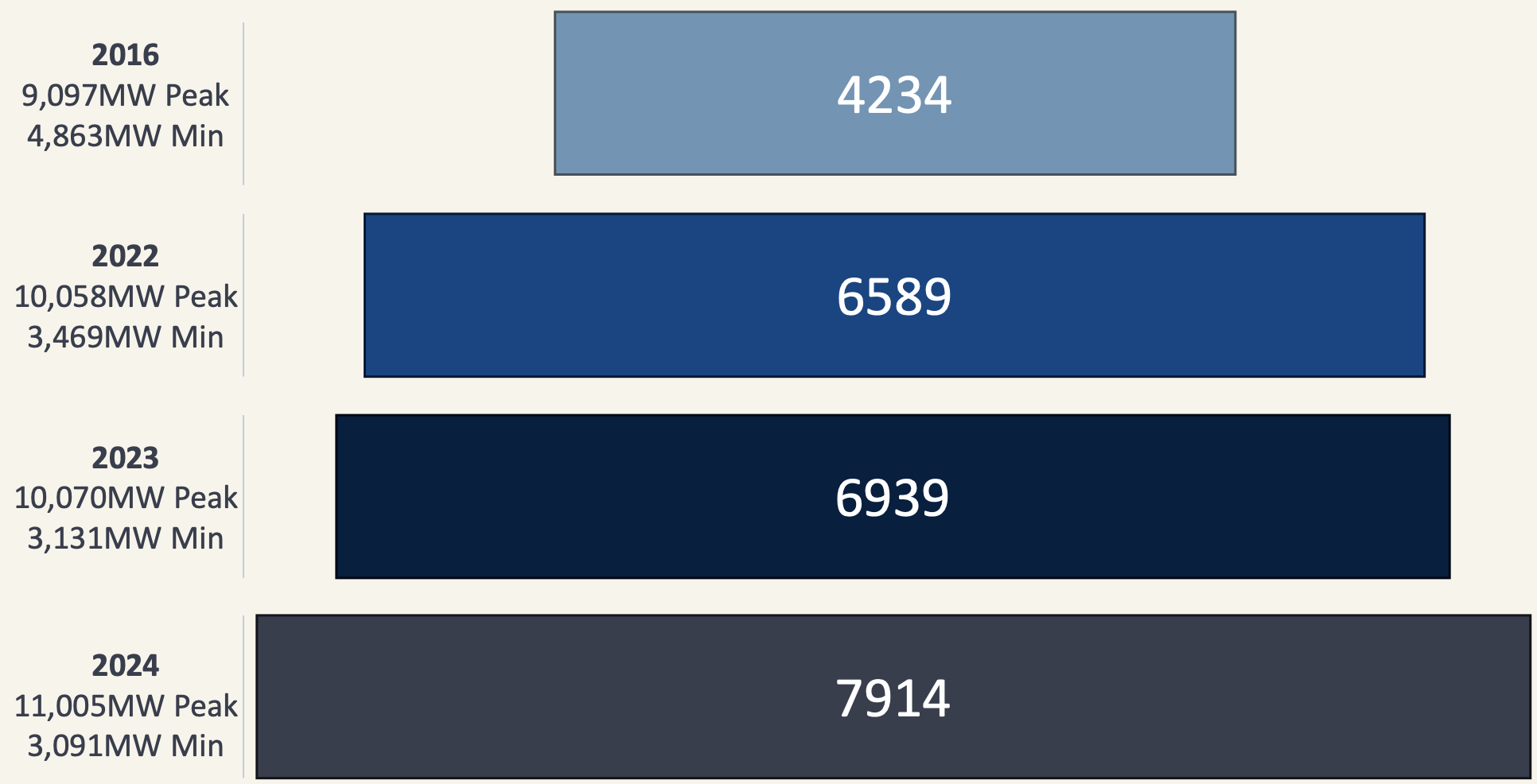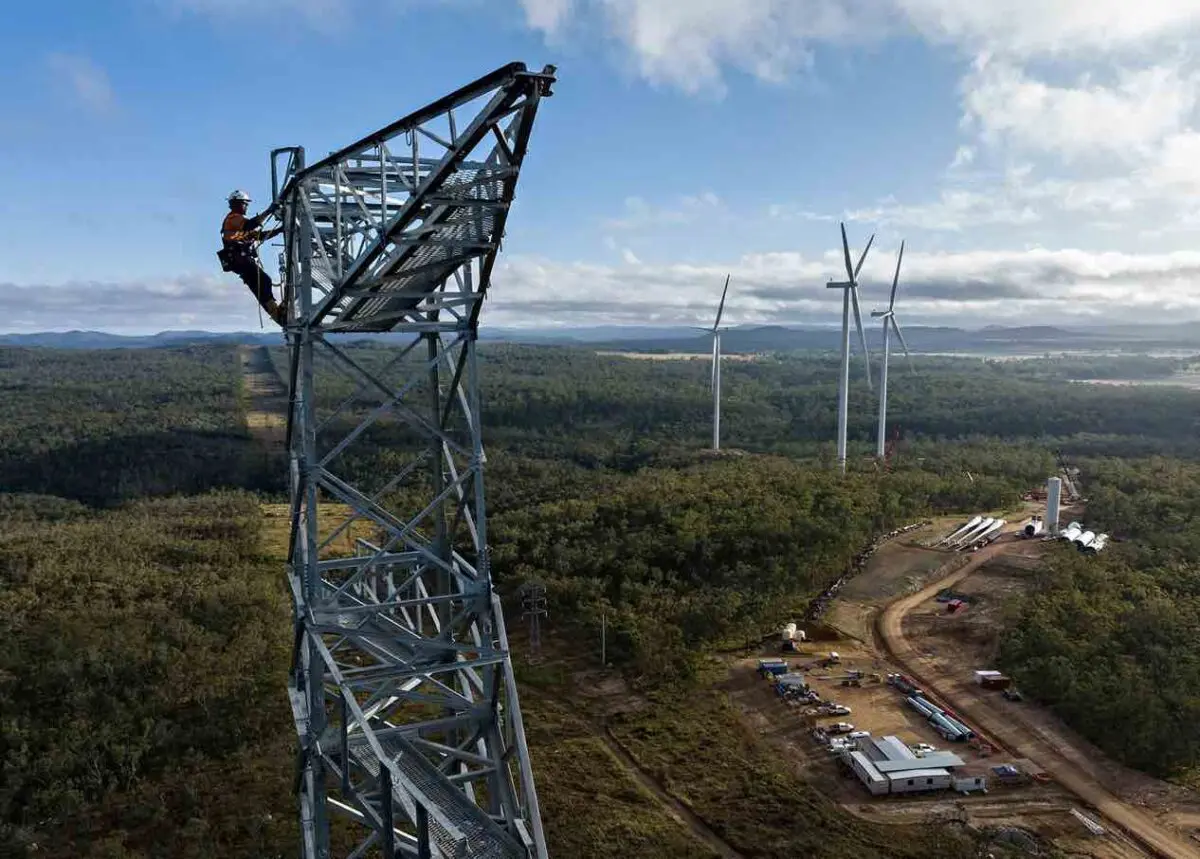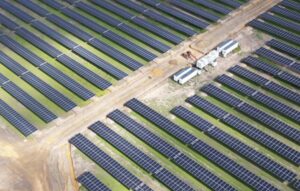As Vic Selvaraja from Rio Tinto stated at a recent Powerlink transmission forum: “Build it and they will come, don’t build it, they wont.
Transmission remains the fundamental building block to decarbonising the grid. I’ve known this ever since 2017 when I studied the ERCOT grid transmission build out in Texas.
Smart people in Government should have got on with this 5 years ago, but at least now there is a concerted effort. Unfortunately, interest rates are much higher, the LNP has realised that – contrary to what they learned at their mother’s knee – the world doesn’t ride on a coal loader and that renewables can and will do the job.
And so they fight and will continue to fight until long after there is no more coal. And that fight makes simple things like transmission harder and more expensive but not impossible or too expensive.
Because transmission has to come before the wind and solar developments it also sets the tone for community engagement. There was much to learn from the presentations and videos of the Powerlink forum but the point that struck home to me most forcibly is that social acceptance is a measurable metric just like anything else.
But it is only, to my knowledge, actually being measured in Queensland. There, they have a community by community survey done by a third party from which various factors can be extracted.
Because the broadly similar survey is conducted each year Powerlink has the ability to measure how and where community attitudes are changing. Key observations from this year’s survey are that views are becoming more polarised and cost of living is a big deal.
Transgrid, VicGrid and EnergyCo should be conducting similar surveys every year and giving themselves some data against which to measure and report.
When I look at the EnergyCo or VicGrid presentations there counts of the number of meetings and consultations held as if that is all there is to it. Not so. What is needed is good social science data conducted by a professional firm against which insights and progress can be measured.

However, Powerlink’s achievements in the year were not just about managing and adjusting to social acceptance. They also managed to shift the Southern to Central QLD link inland thereby saving 300 km of transmission and I imagine having an easier time with easements. And to get the link to Borumba back to 275 Kv.
Finally, signs that cost pressures, with management by Powerlink, are easing was provided by a figure showing how 275 kv circuit breakers had gone from having a 1 year to 4 year lead time and a cost from $350k to over $600 k, but now have come back to close to the original cost and lead time.
No doubt Powerlink working closely with suppliers contributed to that improvement, but I have to think it’s a sign of what can be achieved.
EPBC delay probably increase costs by 20%
What’s become apparent to me over the course of the year is that costs go up just because of project delays.
If the EPBC takes 2 or 3 years to approve or disallow a project that an efficient operator might have done in one year that project is exposed to two years of capital cost increase and two years of interest cost.
Costs could go down and not up, but in general they go up. It is within the Government’s power to reduce costs by being more efficient. That doesn’t mean cutting corners, it just means assigning reasonable timelines and sticking to them.
The Independent Planning Commission (IPC) in NSW has shown this year an ability to determine projects brought to it within its statutory 6 month deadline, and if they can do it I don’t see why other authorities can’t.
Lowering costs and providing benefits to communities should be the focus
Another thing that’s become quite obvious is that communities want to see a direct benefit between transmission and renewable development near them and what they get. It’s well and good that transmission easement have been greatly enhanced by “gratis” Government funding but that only helps the broader community indirectly.
In the South West REZ of NSW the commitment by wind developers to lower the electricity price of every resident or business that lives within a certain distance of a project is clearly a good way to go.
It binds the community, provides a widespread and even benefit across the entire community. I am of the opinion that in NSW, residents and businesses in the entire Orana zone could receive a discounted electricity price for the next 20 years.
And no I haven’t done the funding sums. I’d fund it partly through the transmission owners, partly through the State Govt and partly through renewable projects in the zone.
Transmission builders could find the money by getting costs back to where they used to be as Powerlink has done with its 275Kv circuit breakers.
NSW
Transgrid release their Transmission Annual Planning Report (TAPR) about mid year. A of the proposed State backbone was shown in the latest version of that document as:
Now that Humelink has ECBC approval (never a doubt) the main issues are:

- Humelink and Energy Connect are way undersized. I’ve beaten this issue to death already so I’ll not bang on again:
- 1. The Sydney ring connections, shown in green north and south, for which neither funding nor full commitment has yet been made. It’s stated in the TAPR that 240 km of transmission can support 10 GW of power and there are two options for Sydney Ring South:
Switching station with power flow controllers operational by 2028
- Further strengthen the Southern connection available 2032. 125 km of 500 kv double circuit and associated works. In my view there is a case to build this earlier.
- Development of the “Northern Backbone” . That is the NSW-QLD interconnection and transfer of power between Sydney and South East QLD.
- This development adds 8 GW of power but requires 580 km of transmission and wont be available earlier than 2033. Again I fully support a generally much stronger interconnection between NSW and QLD.
- First this will enable better use of QLD’s very strong renewable resource and second will take advantage of the low historic correlation between NSW and QLD wind. QLD wind blows more strongly in Winter and that is quite valuable.
Queensland – transmission planning forum
Due to health issues I was unable to attend the annual QLD transmission planning forum. In my opinion between Paul Simshauser and Stewart Bell , QLD arguably has the leading transmission team in the nation just now so I expected the forum to be useful.
Excellent slide from some community research.

QLD existing REZs
| Far North QLD | Southern Downs | Western Downs | |
|---|---|---|---|
| Capacity | 500 MW | 2000 MW | 1800 MW |
| Contracted | 152 | 890 | 500 |
And the challenge for QLD and every State

Gladstone
Gladstone is arguably the most interesting industrial zone in Australia from a decarbonisation perspective.
The plan involves moving the proposed Southern to Central QLD link inland potentially accessing up to and additional 10 GW of VRE and saving 300 km of transmission link. In addition there are basically an additional 2 x 275 Kv lines to be built to connect REZs in the area.
This will have to be achieved in the face of continued opposition from the Federal side of the LNP where there is not one supporter of renewable energy, incredible as that may sound.
Gladstone power station is rapidly approaching end of life, end of current contracts. The Callide station is also involved in supply. Energy loads in the area include the Boyne Island Smelter, Australian Cement, two alumina refineries, a large fertiliser plant.
I’ve discussed the opportunity and difficulties for decarbonising Gladstone previously and since in the published slides there is little or no new information I’ll move on.

Victoria
Victorian transmission planning and control has changed in recent years and carriage mostly falls to “VicGrid”, a Victorian Goverment authority.
In addition Transmission Company of Victoria is responsible for the Victorian works for VNI West, a new 500 Kv connection to NSW and partly designed to bring Snowy output to Victoria.
The principal transmission efforts in Victoria are:
- Offshore wind planning. Conceptually transmission for 9 GW of wind are required, some of that will be offshore to Gippsland, some will be existing La Trobe valley links and some will be likely underground new transmission. Conceptually enough transmission for 2 GW of power needs to be ready by 2032. I have my doubts whether that time line will be kept for the wind farm development.
- Western Renewables Link, 190 km 500 kv double circuit line from Bulgana to Sydnenham. Right now in the middle of the environmental approval stage.
- A battery
- VNI West remains in the approval process. I have little or no doubt it will be approved and will come on line sometime around when Snowy 2 is ready.
- It’s a great shame to me that both Humelink and VNI West will have capacity eaten up by Snowy 2 when they could also be used to support more VRE build out and the storage support located closer to demand.








